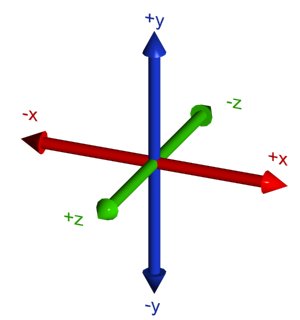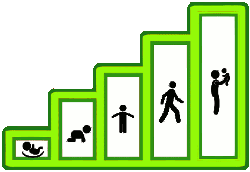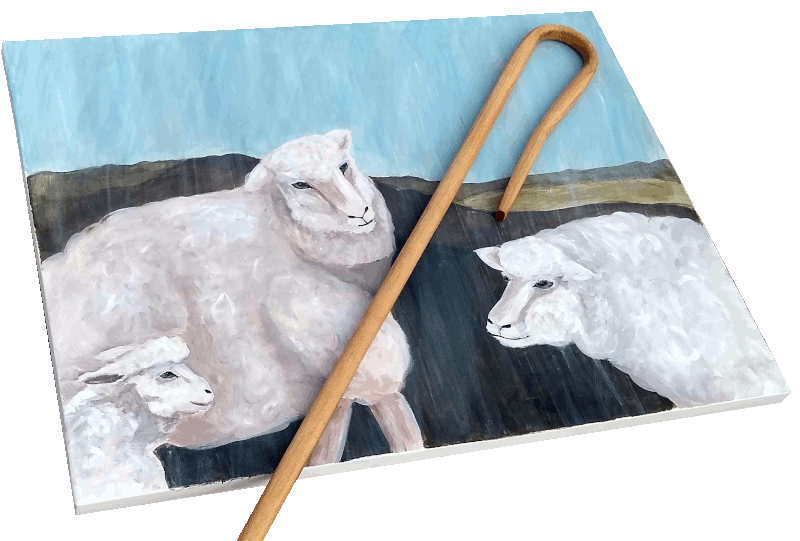LoveSteps Introduction
Before this point, the home page broadly summarized LoveSteps, but now it's time for a proper introduction.
Intro Contents
Testimony from David
I have been working with young people for over 15 years. I have been a mentor, a teacher, a radio DJ, a minister, a father, and a servant in many roles. Growing up without a father and without other vital relationships, my maturity in compassion was stunted. I have researched dozens of curricula and countless books hoping to find a strategy for helping young people, and I have never found anything like LoveSteps.org.
The Problem
People are harmed and neglected by those who fail to show basic compassion. What's worse is that the resulting brokenness has permeated every institution, system, and government. Brokenness has even affected the programs and organizations that are trying to solve these problems.
For example, parents don't receive training before being given a child to raise. Mentors and teachers have their shares of struggles. Furthermore, churches seem to lack what it takes to solve the problems of the world. Churches might try social justice, evangelism, or discipleship. Even if there was a consensus as to what these terms mean, it is unfortunate that the eyes of the world do not typically see that the mission of the church is centered in love. Certainly, most churches lack a comprehensive, well-defined strategy of discipleship, especially one that incorporates a method for growth in compassion.
A Solution and A Method
Love is the solution to the aforementioned problems. So, LoveSteps leaders encourage a process of growth in the ability to love God and to love others. The method is to use three requirements while depending on four components. Below you will be introduced to these requirements and components briefly, and there will be more about them on the tour.

Three Requirements Summary
Time is made up of three: past, present, and future. Also, space has three: height, width, and depth. Similarly, it would not be LoveSteps without these three: love, steps, relationships. These are the three requirements of LoveSteps.

Requirement 1: Love
The first requirement in the LoveSteps method is Love. Which kind of love is it? There is a kind of enjoyment-love, as in a love of chocolate. Also, there's romantic love (Greek: Έρως / eros / eros). The LoveSteps kind of love is beyond both of these types of love.
There are other kinds of love: brotherly love (Greek: φιλέω / philo/ philo) is a friendship-love for fellow humans. A familial love (Greek: στοργή(storge)) can be more intense as is often shown in parent-child relationships. Lastly, there is a divine love (Greek: ἀγαπάω / agape / agape). In Christian circles, this is the highest form of love. These kinds of love relate to the LoveSteps kind of love.
The LoveSteps kind of love is generous and sacrificial, like when a parent prioritizes compassion for the child above selfish interests. Compassionate parents sacrifice things like personal leisure time, money, sleep, and more for their children. LoveSteps-love balances extreme generosity by being true to self, recognizing the whole heart, mind, and all parts of the self. It is not random or thoughtless, but full of intention and full of devotion. LoveSteps requires this strongest, wisest kind of love.
To introduce this required love clearly, let’s identify the character traits of love. These traits are as follows: patience, kindness, humility, gentleness, strength, protection, honesty, joy, justice, endurance, faithfulness, commitment, hope. Conversely, people who are immature in love tend to be jealous, boastful, rude, demanding, selfish, weak, disrespectful, cheap, or shortsighted. LoveSteps requires that leaders grow towards these traits to have generous compassion and to have a genuine relational connection.

Requirement 2: Steps
“Steps” invokes the metaphor of physical human growth to represent growth in a person's capacity to love. LoveSteps requires the following steps:
- The Newborn Step
- The Toddler Step
- The Youth Step
- The Adolescent Step
- The Parent Step
- The Grandparent Step
As with human development, the first steps are times of high need, whereas the parent step is when the student has become a teacher, or the follower has become a leader. The final step is supervisory, similar to grandparenting, or leaders leading leaders.

Requirement 3: Relationships
This site is not created primarily as a self-help resource. Rather, this site is a resource for users to help others. LoveSteps resources inspire, focus, and equip primary and secondary relationships.
Primary Examples
- Teacher – Student
- Mentor – Mentee
- Small-Group Leader – Group Member
- Parent – Child
- Friend – Friend
- Relative – Relative
- Leader – Follower
- Pastor – Parishioner
- Spiritual Parent – Son or daughter in the faith1 Timothy 1:2
Secondary Examples
- Caring Communities
- Small Groups
- Families
- Faith relationships
- Friendships
Relationships help cause growth that is impossible to achieve in solitude. The tour has more on this, including six traits for effective relationships.

LoveSteps Depends on 4 Components
- Full Dimensional Growth
- Quality Leadership
- Multi-Media Training Content
- Global Strategy
Discover the components below, and how a successful implementation of the LoveSteps method depends on them.
Component 1: Full-Dimensional Growth
Full-dimensional growth must involve all parts of the self. LoveSteps identifies five parts of the self: social, physical, emotional, spiritual, intellectual. The five parts of self are interconnected, with inner and outer dimensions. The inner three overlap. Only growth involving all dimensions results in maturity that is “whole,” “complete,” and “full-dimensional.”.

Let's see why full-dimensional maturity is needed. Imagine a physically tall adult with a family, but inside this adult is a hidden moral bankruptcy and an inability to cope with normal life. As these problematic inner issues continue, poor choices lead to jail time and financial strain. These problems compound causing personal damage. It’s likely that this adult struggles for quality of life, peace of mind, or purpose in life.
When inner dimensions lack maturity in compassion there is collateral damage. Physical height is useless to raise a child through jail bars. Inner problems find a way out into public and society suffers at least a loss of potential. Damage ensues from relationships that failed to form. Who would want to deal with damage from a lack of maturity in any of the dimensions?


Component 2: Quality Leadership
LoveSteps depends on quality leadership. While relationships provide the road to growth, leadership can either help or harm the growth process. Good leadership is the engine that helps provide what is needed to the follower. Because this engine is so vital, LoveSteps provides leadership training courses and has requirements for certification.

Component 3: Quality Training Content
LoveSteps offers a variety of inspirational resources in multiple media formats. They are first created in text (HTML/pdf), then as audio (mp3), and finally as video (mp4/YouTube). The hope is that the material can be downloaded for listening while on the road, listening in the kitchen, or absorbing at opportune times. Topics include:
- Leader training content
- Growth plans
- Growth milestones
- A blog
- Jesus content (based on Matthew, Mark, Luke, John)
- Content in course format (also known as series)
Two final notes are needed about the content. One, since growth will last a lifetime, the resources here act as a framework. It won't take a lifetime to examine all the LoveSteps content. Two, the courses are always under development.

Component 4: Global Strategy
Without a strategy that depends on these points, LoveSteps could not empower maturity or make a difference in the world. Here is a summary of the strategy. An explanation for these points is provided on the tour page.
- Dynamic
- Open
- Jesus-centered
- Greats oriented
- Living
- Inclusive
- Partnership

Courses Intro
Here is a quick look at the topics to be covered in the LoveSteps courses.
- The NewLife Step
- The Toddler Step
- The Youth Step
- The Adolescent Step
- The Parent Step
- The Grandparent Step
- Full Dimensional Growth in Love
- Leadership
- Jesus
This has been a quick and proper intro. Thank you for examining it! Next, enjoy the tour. Remember, to completely understand LoveSteps you will need the tour. Afterward, you will have a firm grasp and be ready to begin using course materials.